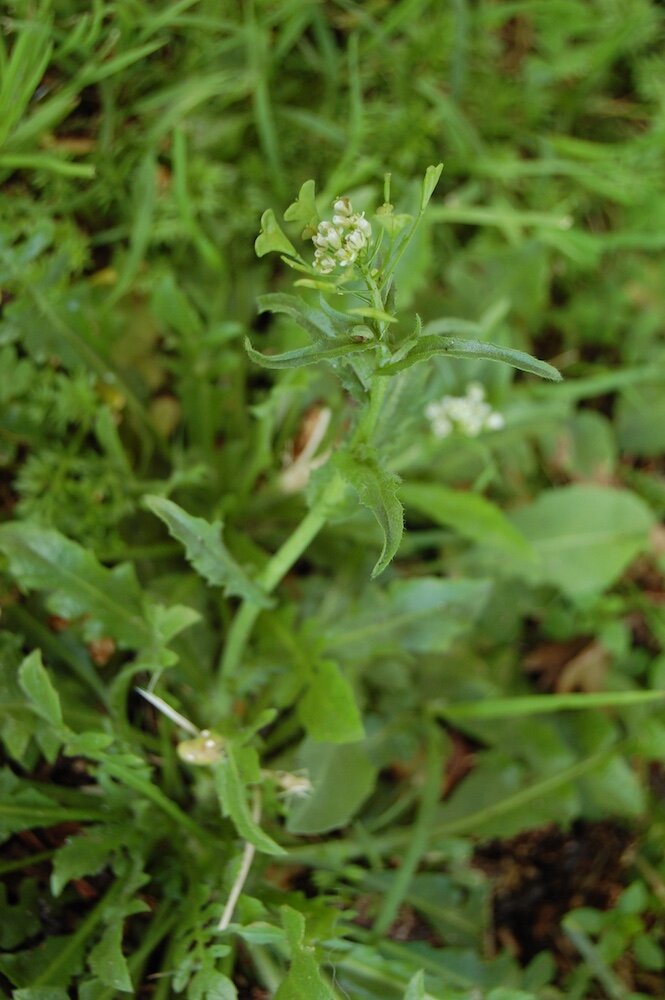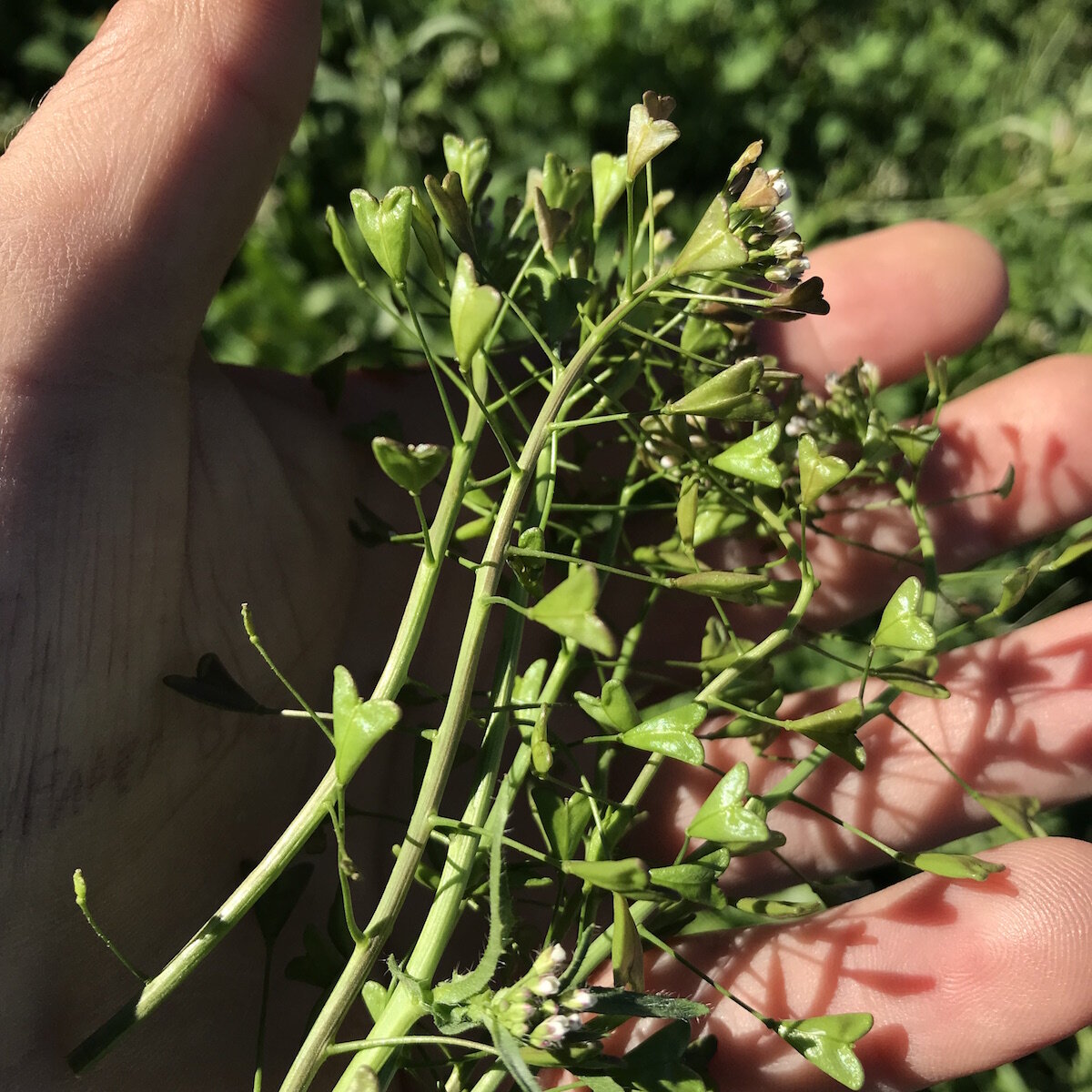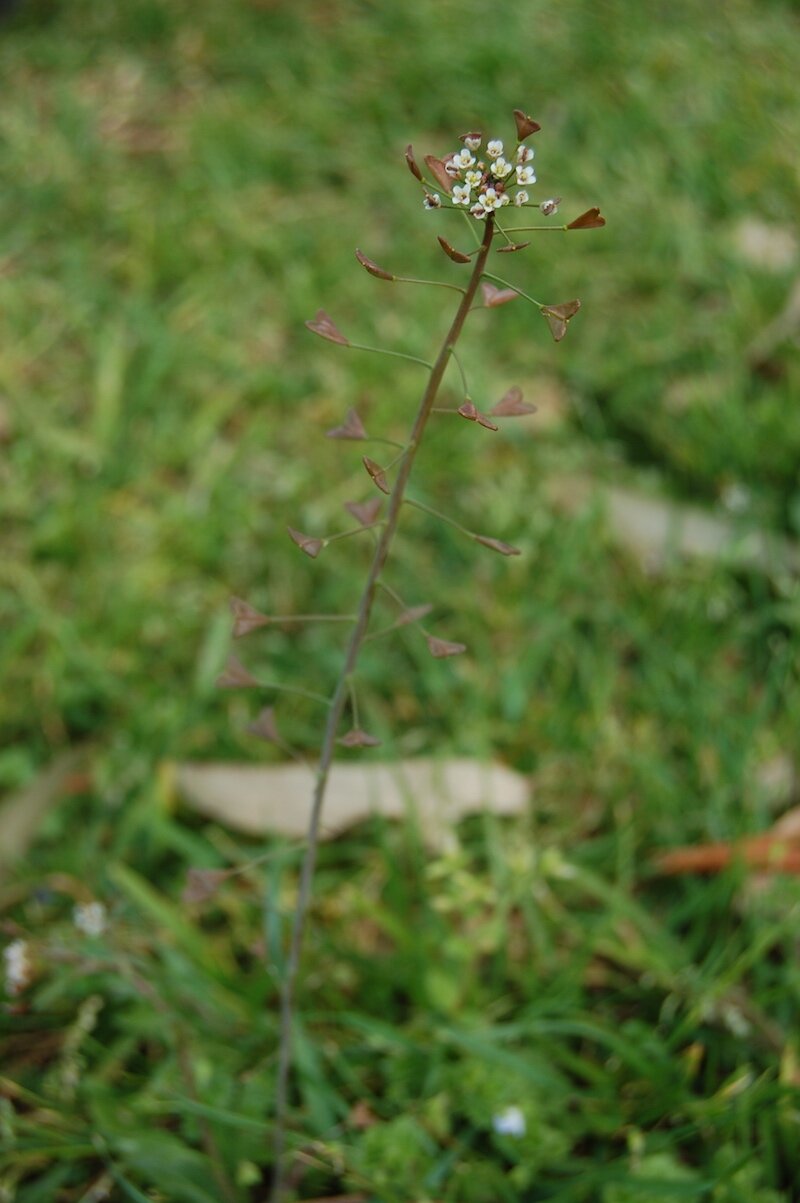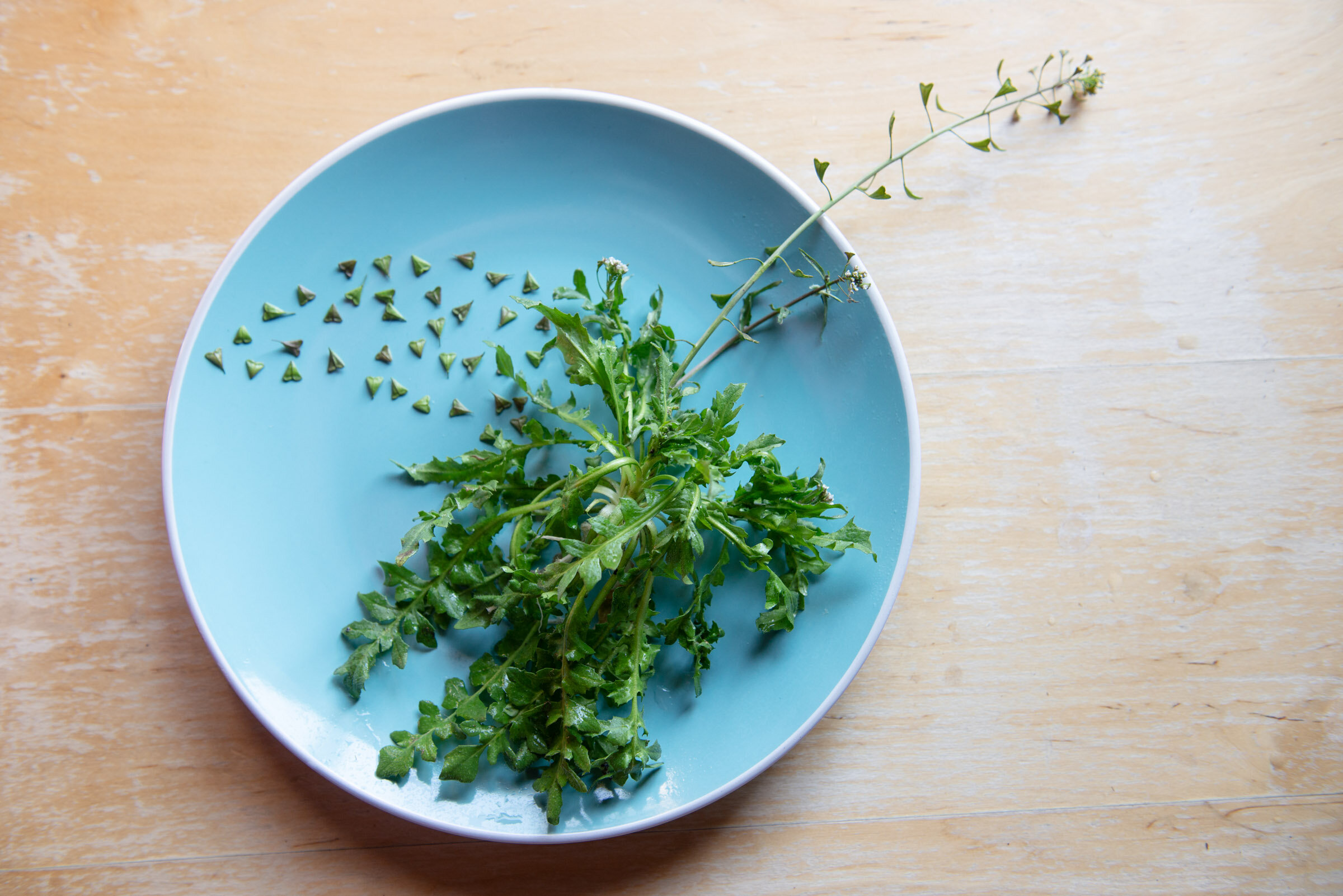Shepherd's purse – and the value of stories.
Some plants come with excellent names and stories attached to them.
Stories are great tools that if recounted properly, can help people remember complex details like uses, seasonal data, geographical information and kin structures.
Many scholars argue that we are a species made of stories, as in, the stories that we learn shape the way we see the world. The stories that we tell shape the way the world unfolds.
In the case of Shepherd’s purse, the story is old and can be traced back all the way to Çatalhöyük, in modern day’s Turkey, where it was part of Neolithic diets as far back as 7,000 BCE. In western culture terms, that is as ancient as it can get, making it a very old story.
So what is the story? Shepherd’s purse - Capsella bursa-pastoris - owns its name to the peculiarity of its seed pods, shaped like little hearts or, as the name suggests, little shepherd’s pouches.
This peculiar name has been such an important identification feature that even the scientific name, Capsella bursa-pastoris refers to it:
Capsella , from Latin’s capsa (“a box, case”) + -ella (diminutive suffix)= Small box
Bursa, that in Latin means purse, especially one made of skin or leather
Pastoris, genitive singular of pastor= of a shepherd
A small container that looks like a shepherd’s purse.
Now, that story is also true in the French language where it is called Bourse à pasteur ( Shepherd’s purse); in Germany where is called Hirtentasche ( Shepherd’s purse) and even Russia, where it is called Pastushya Sumk (Shepherd’s purse).
Amazing isn’t it? I do not know of many (if any) other plants with such a strong narrative that translates to so many cultures.
So what it is that makes the plant so obviously a Shepherd’s purse? The seedpods, shaped like little hearts. Which unfortunately are not really hearts at all…
Do you know what shepherds used to make their bags with? Scrotums. Yep. Sorry for breaking this vision to you but yes, ram’s balls.
I know this is a bit gross, but nevertheless effective, as you will not be able to un-see this plant anymore. Where ever you go, you will see, flapping in the wind, this little reminder of ancient crass humour: sheep’s sacks.
Fresh young greens ready for the pan
Fresh seed pods, great in salads, in sandwiches or as garnish on fancy dishes
The seedpods will turn red when under stress (cold weather)
How to identify Shepherd’s purse
Image by Australian Living Atlas
This small little herb key feature is the seedpods, proudly standing straight in the wind advertising their name. The plant itself is an annual, every year grows out as a rosette (all leaves radiate out from a central crown). It produces flowers and seeds on a tall spike all through the cold months of the year, disappearing when summer settles in. Shepherd’s purse is renowned for its variability, with whole leaves at times and highly indented others (toothed). This peculiar variability is actually been studied scientifically and the consensus is that all of those different looks are all the same plant, inbreeding and adapting to local conditions. Whatever the plant’s leaves look like, the flowers and -importantly- the seed pods (sheep sacks) will always look the same.
The plant grows in all states but is most common in South East Australia, from north of Brisbane all the way to west of Adelaide (see map). When is growing in poor condition it reaches 15- 20 cm in height, while when growing in favourable soils it can be up to 60cm tall and with leaves as big as 30cm long by 4 cm wide.
Shepherd’s purse is an extra-ordinary pioneer plant, it can grow in a wide variety of conditions as long it is not too crowded or too wet. It is one of the first coloniser of new soils and very common around human’s settlements. It is regarded as the second-most widespread weed in the world.
Shepherd purse as food
Image by Georgie Pollard
Capsella bursa-pastoris is harvested from the wild all over the world and cultivated as a commercial food crop in Asia.
In China, where it is known as jìcài (荠菜; 薺菜) it is commonly used as food in Shanghai and the surrounding Jiangnan region. It is stir-fried with rice cakes and other ingredients or as part of the filling in wontons. If you ever go to the Asian grocery shop and look in the dumpling fridge, there you will find Shepherd’s purse dumpling.
In Japan, it is one of the seven ingredients of the symbolic dish consumed in the spring-time festival, Nanakusa-no-sekku.
In Korea, it is known as naengi (냉이) and used as a root vegetable in the characteristic Korean dish, namul (fresh greens and wild vegetables).
It can be eaten raw and it has a cabbage taste with hints of mustard.
Where I live it is quite common to see the old Chinese ladies collecting Shepherd’s purse in the urban parks of late winter/early spring, as a seasonal food marker of great cultural value.
Please note that the plant is not suitable food for pregnant women.
Shepherd purse as medicine
Shepherd’s purse is not greatly utilised in modern western herbalism but still extensively prescribed in Traditional Chinese Medicine. It is also a very common folk remedy employed by untrained people all over the world as a home remedy to help stop external and internal bleeding.
There is extensive documentation of the medicinal property of the plant, see here, here and here for example. To summarise the value I will use the words of a great herbalist form USA, Susun Weed who shares:
“Shepherd’s purse is an annual in the mustard family. Cut the top half of the plant when it has formed its little heart-shaped "purses" and make a tincture (with alcohol), which you can use to stop bleeding. Midwives and women who bleed heavily during their period praise its prompt effectiveness. Gypsies claim it works on the stomach and lungs as well.”
In TCM the plant is extensively used for the regulation of blood and to help with eyesight.
Other uses and random trivia.
The seeds are reported to be quite effective insecticides, particularly with mosquitoes. If you place a handful of seeds in the water they produce a gummy substance that attracts insects and binds their mouth. The seed also releases a substance toxic to the larvae. ½ kilo of seed is said to be able to kill 10 million larvae!
Furthermore, the plant is now considered a protocarnivory plant, as the seeds attract nematodes, kill them and through the process enrich the soil where they are growing. There you have it. The little hearts are not so cute now, but still, a magnificent plant.
Yay for weeds!
Reference
Useful Tropical Plants http://tropical.theferns.info/viewtropical.php?id=Capsella+bursa-pastoris
Medicinal Herb Info http://medicinalherbinfo.org/000Herbs2016/1herbs/shepherds-purse/
White rabbit Institute https://www.whiterabbitinstituteofhealing.com/herbs/shepherds-purse/
Herbal legacy https://www.herballegacy.com/Ray_History.html
Botanical.com https://botanical.com/botanical/mgmh/s/shephe47.html
Wikipedia UK https://en.wikipedia.org/wiki/Capsella_bursa-pastoris
Wikipedia Italy https://it.wikipedia.org/wiki/Capsella_bursa-pastoris
Atlas of Living Australia https://bie.ala.org.au/species/https://id.biodiversity.org.au/node/apni/2912156
Disclaimer: This information should be used as a guide only. It is not my intention to advise anyone on medical conditions, rather I'm just presenting a new way to look at the plants growing in your yard.
Let me help: if you are unsure about the identification of your plants tag me in a picture or comment below, and I’ll endeavour to help.
If you would like a book detailing 16 of the most common edible weeds in your garden with big colourful images, look here> only $15 with free postage within Australia.
Or, if you’re in Sydney, you might want to look at our Edible Backyard Mapping services. I come to your garden be it big or small, identify the plants of value and provide you with a full report. Check it out>
This article is an extract form the upcoming publication Eat Weeds, due to be released by Thames&Hudson Australia in early 2022.
The publication has been supported by the City of Sydney via its Creative Fellowship Fund.






